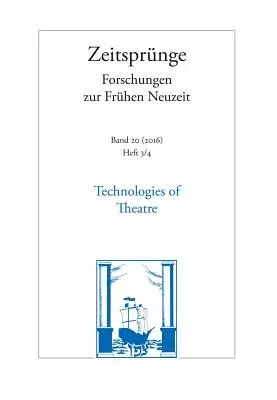Baroque theatre spectacles are frequently celebrated for their
overwhelming effects and marvelous technologies. However, little is
known about how the mechanical knowledge for elaborate stage machineries
was actually acquired by architects and engineers, and how it
disseminated throughout European theatre cultures with regard to
specific religious, social, political as well as economical contexts. So
far unnoticed by historians of theatre and performance, the early
seventeenth-century codex iconographicus 401 (Bavarian State Library)
offers new insight to the transfer of mechanical knowledge and theater
technology. This manuscript can now be attributed to Joseph Furttenbach
(1591-1667), building master of the Swabian city of Ulm, today best
known for his numerous publications on architectural theory. The codex
incorporates technical drawings and descriptions of the theatrical
machineries invented and designed by Giulio Parigi for the epoch-making
festivals at the Medici court in Florence. The invention and
construction of theatrical machineries was taught at Parigi's Florentine
academy of art and engineering, which Furttenbach attended. Besides an
English translation of Furttenbach's manuscript (originally written in
German language), this volume collects studies at the intersection of
theater, architecture, and technology, proposing an innovative approach
to the historiography of early modern theater.

